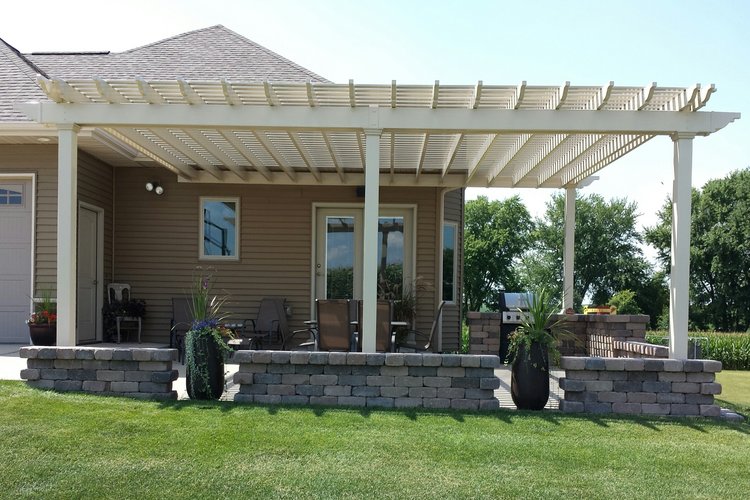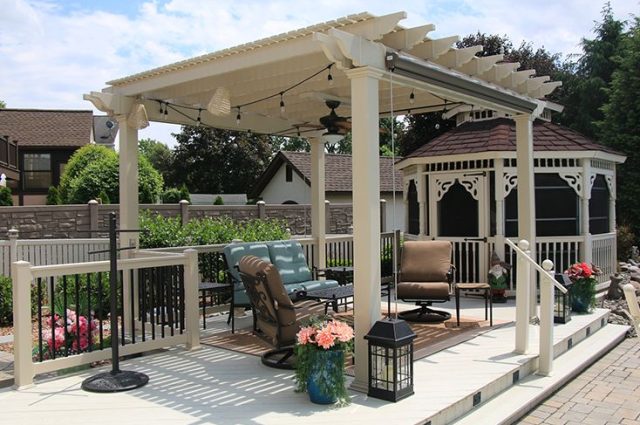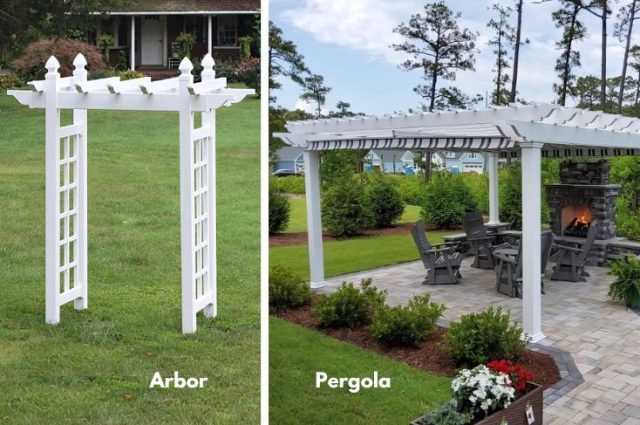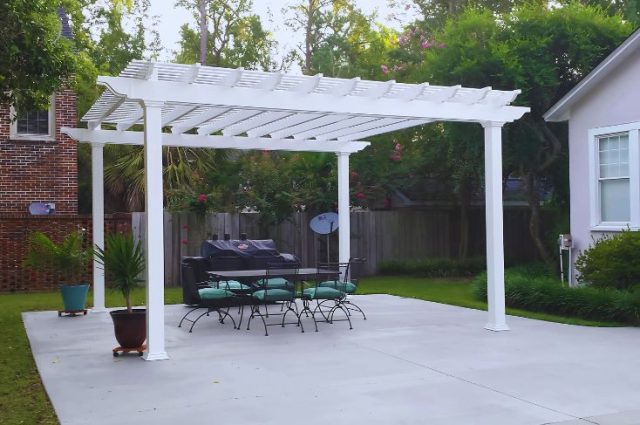History of Pergolas

Pergolas date back more than 3,000 years. The earliest known garden pergola dates back to 1400 BC and belonged to an Egyptian high court official. While no one knows for certain what inspired the creation of a pergola, whether it was aesthetic beauty or shelter from the weather, the truth is that pergolas continue to provide families with both practical use and functional beauty and have stood the test of time.
Pergolas have served many purposes throughout the years – from beautiful hanging gardens for the wealthy elite to structures designed to grow and harvest certain types of vegetation. Pergolas were also used as shaded walkways between buildings or protection from an open terrace. Back then they were constructed mainly from brick, stone or wood and vines were trained to creep between the lattices and provide comforting shade.
Freestanding pergolas, those not attached to a home or other structure, provide a sitting area that allows for breeze and light sun, but offers protection from the harsh glare of direct sunlight. Pergolas also give climbing plants a structure on which to grow.
Today, pergolas provide a wide range of functions including a shady respite, aesthetic backyard beauty and an anchor for garden growth. When choosing a pergola, it’s important to determine how you will be using it to help you decide which pergola is right for you.
Some additional uses for pergolas include:
- Protection and shading for an outdoor kitchen
- Poolside cabana retreat
- Shading for outdoor patio
- Elevating your garden oasis
- Entryway to home
- Fresh-air dining room
Although their styles and materials may have changed, their purpose has remained the same for over 3000 years. With pergolas, the possibilities are endless. Contact us today for a free consultation on building your own dream pergola.
Share This Post:



